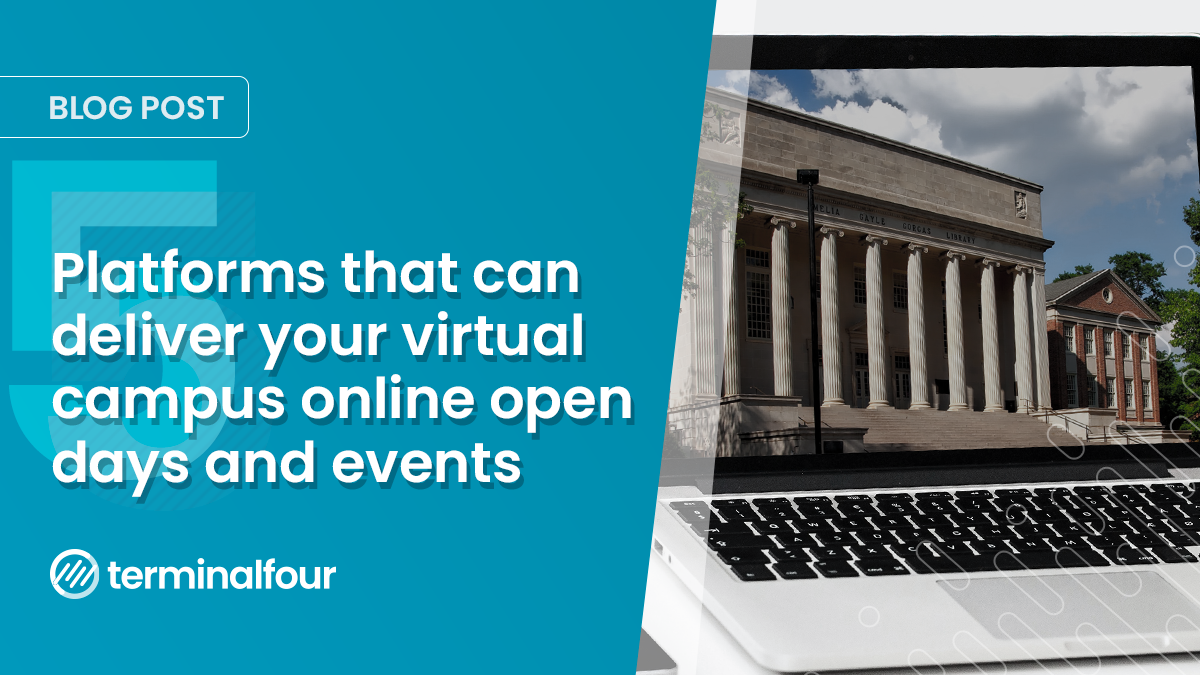Peer-to-peer advocacy looks to be a key trend for the next recruitment cycle, with in-person events still locked down and applicants more likely than ever to have questions and concerns about their study destination.
We've looked at different options already being employed successfully across the sector, to provide inspiration for your institution.
What is peer-to-peer advocacy in Higher Education?
Firstly, a quick refresher on the concept of peer-to-peer (P2P) advocacy. One of the main trends of modern marketing has been the democratization and decentralization of communication. Thanks to social media and review sites, anyone can talk about your brand online.
In parallel, the public is increasingly skeptical towards marketing messages and 'authority', favoring the perceived impartiality and authenticity of real customer opinions.
With both appetite and opportunity for peer-to-peer communication increasing, savvy marketers have seized the opportunity to leverage and amplify the voice of their customers in their marketing.
Whilst prospective students still rely on official university information to decide where to apply, they're increasingly turning to peer-to-peer platforms for advice and guidance to help them decide where to actually go.
In their research into HE P2P[i], global recruitment marketing experts Intead found 57% of students said peer-to-peer interactions influenced their decision; moreover, they said these online conversations were the most helpful resource they accessed when deciding where to apply. (By comparison, 47% said friends and family, who have previously been viewed as the most influential reference for students.)

Open Days and authentic advocacy
For universities, Open Days have traditionally provided a platform for interaction between current and prospective students.
The secret weapon of the recruitment cycle, unmediated access to student ambassadors provides prospects with the opportunity to ask questions they don't want to ask of officials, getting to grips with essential intangibles and on-the-ground insights that only current students can provide. How they'll be supported, whether they'll fit in…
Authentic advocacy is especially important for widening participation, where certain students may face additional barriers to successful onboarding. Showcasing the experience of diverse students and creating the anticipation of belonging can help convert offer holders into registered students.
With on-campus events now moving online, it is essential that your virtual Open Days provide a place for P2P conversations. But what other P2P opportunities can universities employ to support conversion?

1. Review sites and forums
Across the globe, websites publishing information about universities abound: from official league tables to university review sites and P2P conversation facilitators like Student Room. The top sites pack a punch with Google and rank highly in organic search, so can be highly visible and influential. But what can universities do to leverage this content?
Share
Some universities – like Loughborough in the UK - have chosen to share reviews from external sites on their own. This provides the opportunity to showcase authentic advocacy in a controlled environment. Loughborough are further signaling their commitment to the student's voice by promoting their status as the WhatUni Student Choice 'University of the Year' on their homepage during their virtual events season
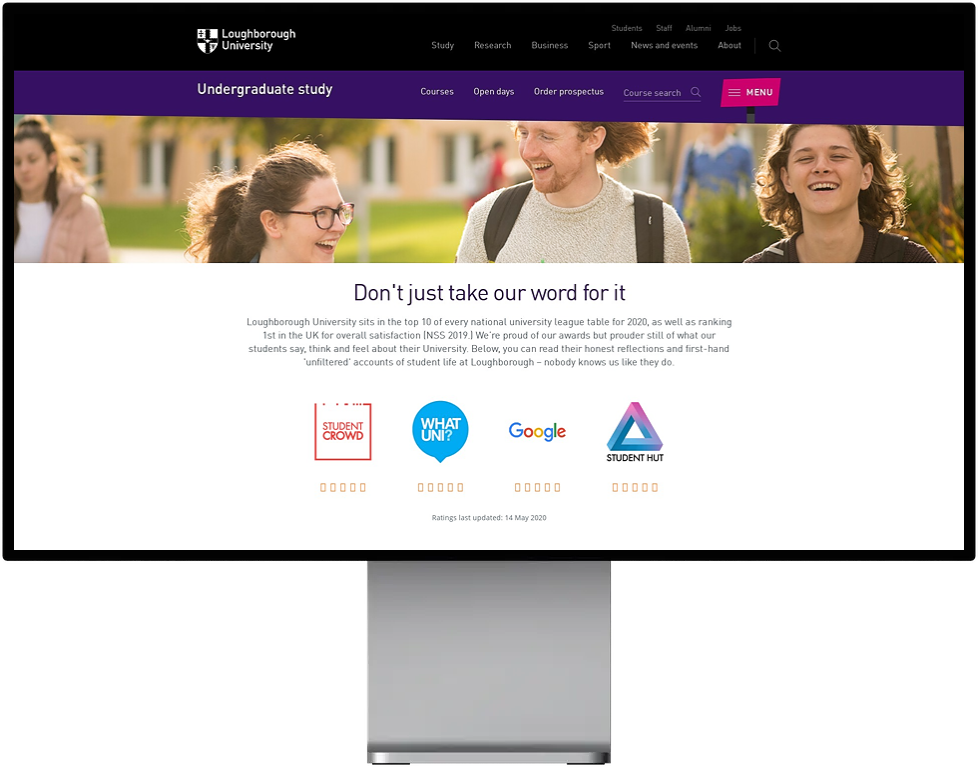
Engage
Higher Ed-specific Sites like the UK's StudentRoom provide space for student-to-student conversations and have 'official' threads that institutions can manage themselves. Staffing these threads with trained student ambassadors combines the benefit of student advocacy with some central control over messaging accuracy; all via high traffic, high visibility sites.
Conversations don't have to happen in education-specific platforms either. McMaster University and the University of Texas at Dallas are just two universities using Discord – the online hangout app – to field questions from future students, as well as showcase the campus community.
A report into the College Admissions Journey in the US[ii] found that pre-reg students experience anxiety around a range of factors, from personal fit to mental health provision. Conversations with existing students help alleviate worries that prospects are afraid to ask through official channels and create a sense of belonging that contributes to an increased propensity to apply and enroll.
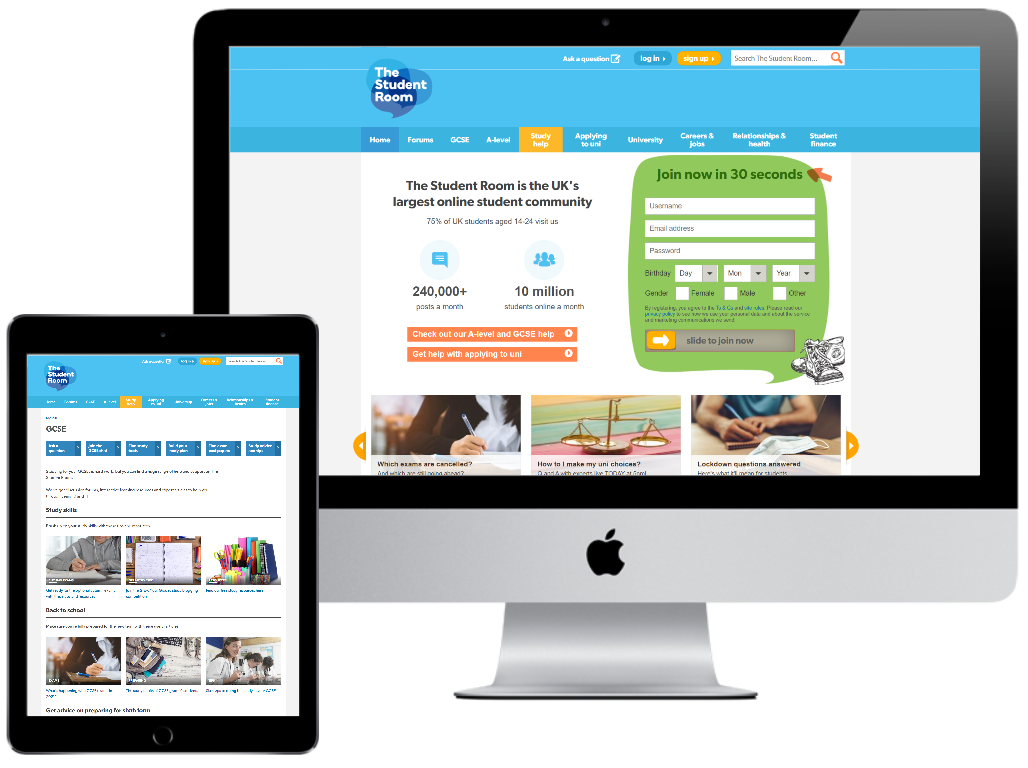
Listen
Properly monitored as part of a social listening program, these sites can provide actionable insights into the sorts of information that prospects need at different stages of the recruitment cycle.
This can help inform content strategy by surfacing pain points and FAQs you can address in your digital content throughout the year.
2. Student influencers
Student bloggers are a common feature of modern HE marketing tactics. Combined with social listening to inform content planning, students can write about uni life with authenticity and a laser-focus on real-time recruitment queries.
V2.0 of this approach is to recruit existing influencers you have studying with you. You may be surprised to find you have a YouTube sensation, Insta influencer, or TikTok talent already creating content about their study experience and reaching your target audience with ease.
In a blog for Campus Sonar, the University of Central Florida talks about their experience of identifying, selecting and using on-campus content creators to bring their messages to a much larger audience.
3. P2P advice platforms
P2P advice platforms – such as UniBuddy and The Access Platform – offer a range of functionality to facilitate meaningful interactions between students and prospects.
They can be integrated into your own website to provide P2P chat functionality from within your branded domain, providing access to student ambassadors for ongoing conversations and content.
This can support decision-making pre-application by adding an 'Ask a student' function into course content. It can also help 'convert and keep warm' activities pre-registration.
The University of Sydney uses The Access Platform to support the onboarding of international students. Using the familiar style of chatbot pop-up, Sydney invites visitors to their 'Get Ready for Uni' pages to 'Chat with an international student'. This takes visitors to a landing page featuring chat functionality, student profiles, user-generated content, blogs, and FAQs.
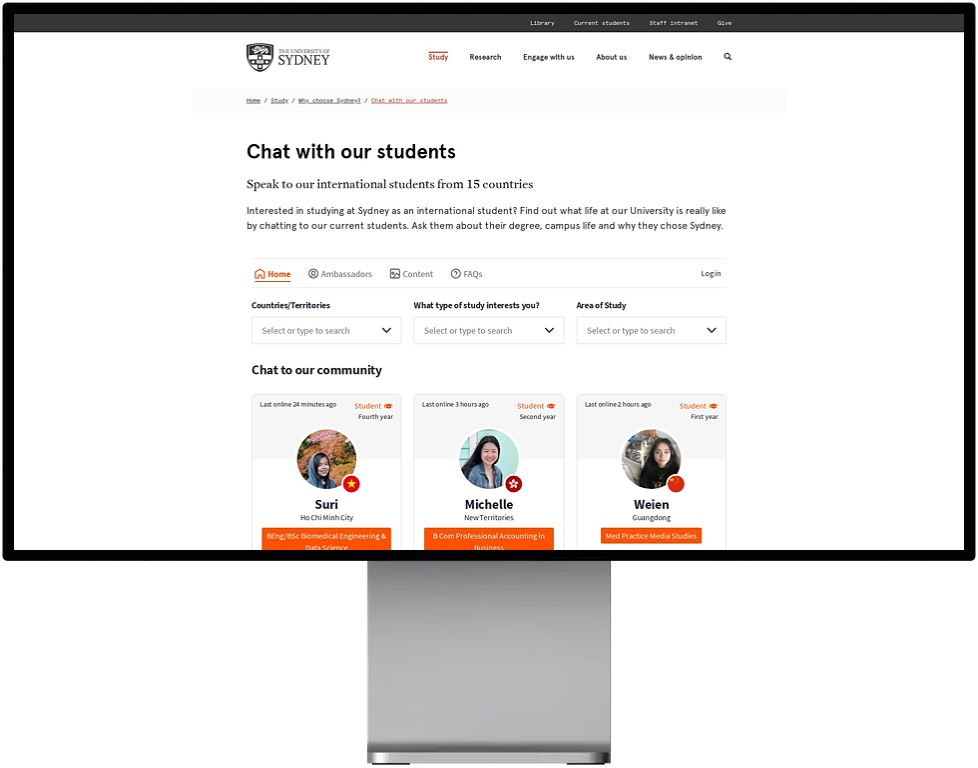
P2P software can also help universities pivot easily to virtual events, by providing off-the-shelf live chat and content-sharing functionality. The University of Sunderland recently delivered an online Open Day in just 10 days, where 20 student ambassadors exchanged over 1700 messages with prospective students.
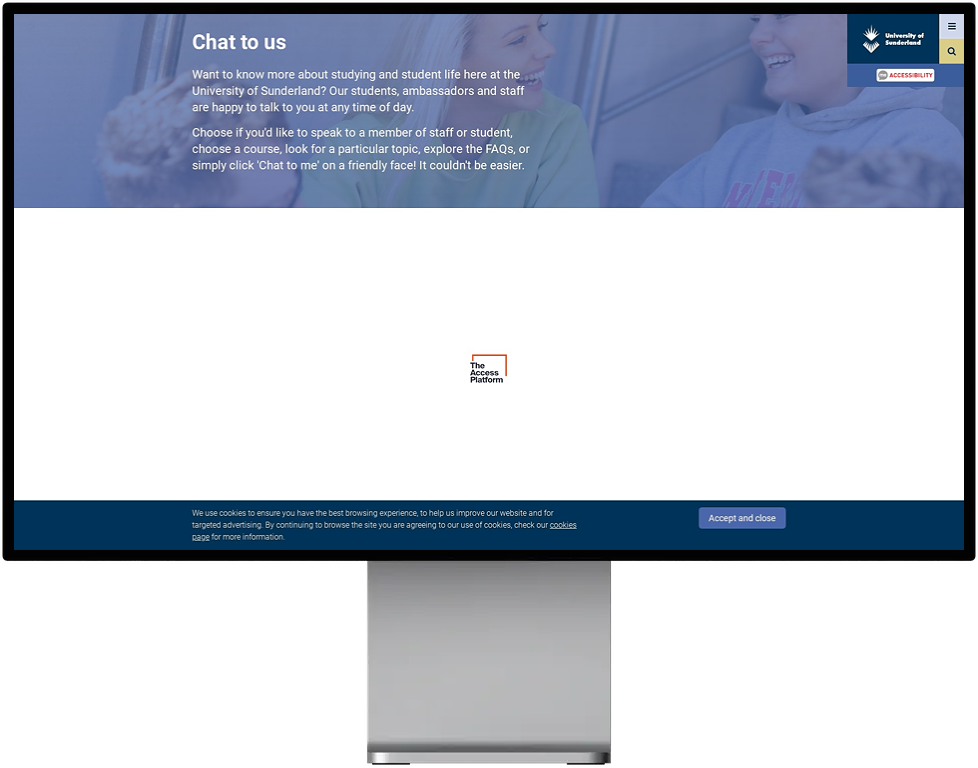
What's the impact of these interactions? The Access Platform report that 72% of prospective students say they are more likely to apply having had a conversation through their service.
Whilst UniBuddy report 89% of users said they felt more confident about their university choice after using their system.
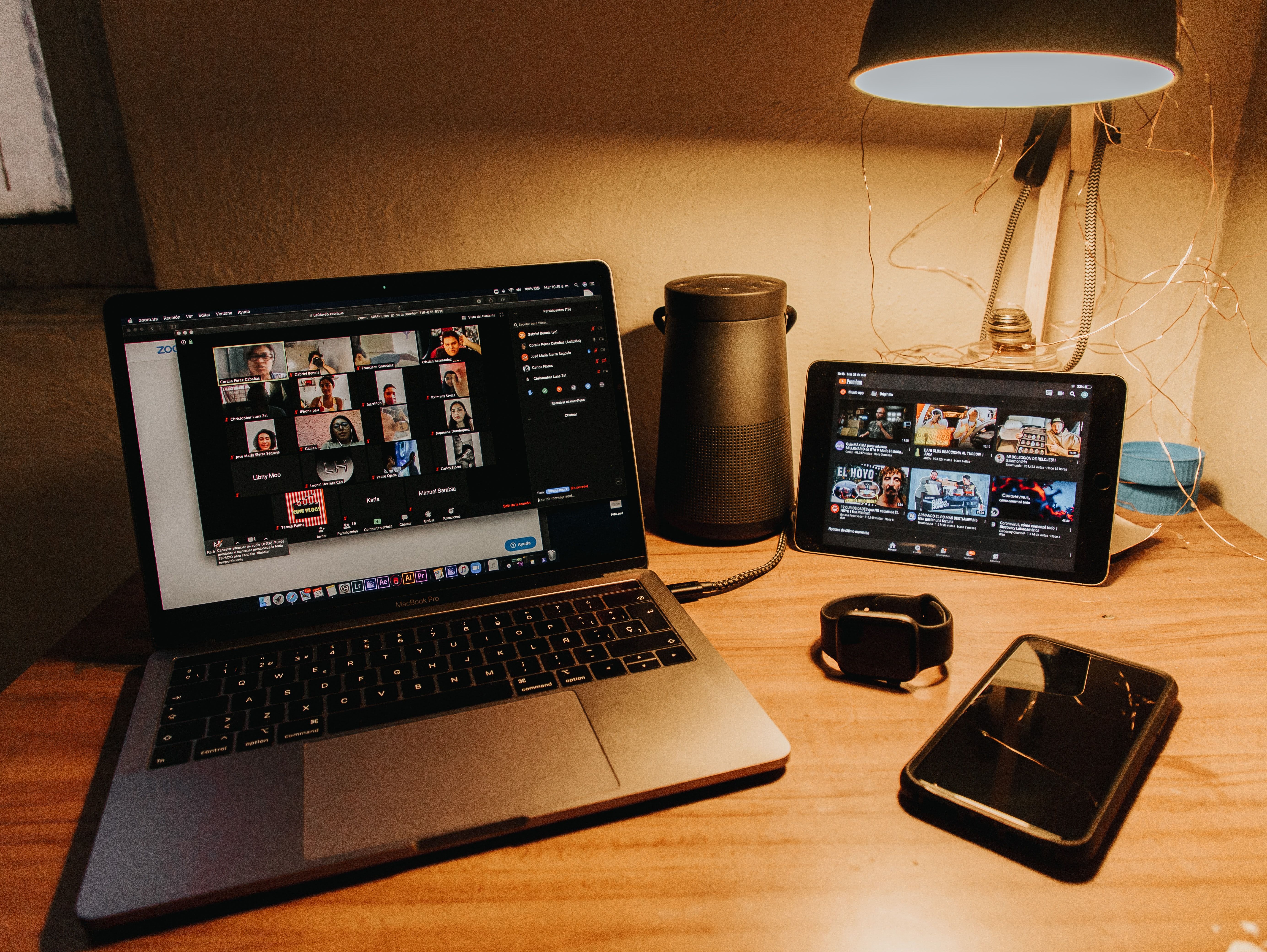
The P2P opportunity is here to stay
Higher Education is one area where authentic brand advocacy is in abundance.
University is literally a life-changing event, happening at a time when students are alive with curiosity and enthusiasm, amazed by the novelty of independent living, and likely to develop a strong loyalty to their institution.
Not only that, but they're also eager to prove themselves to employers with a portfolio of employment and extracurricular activity.
Institutions that seize the opportunity to harness this enthusiasm in a program of targeted P2P activity are more likely to thrive, especially in the current climate.
[i] Peer-to-peer student conversations report, January 2020, Intead
[ii] SOCIAL LISTENING IN HIGHER ED: The College Admissions Journey, Campus Sonar

